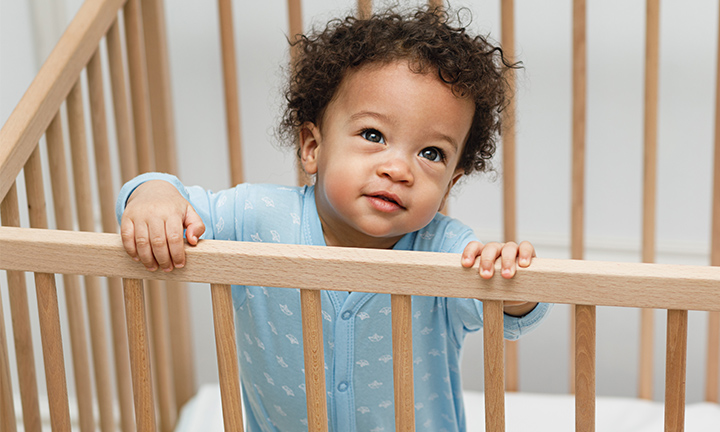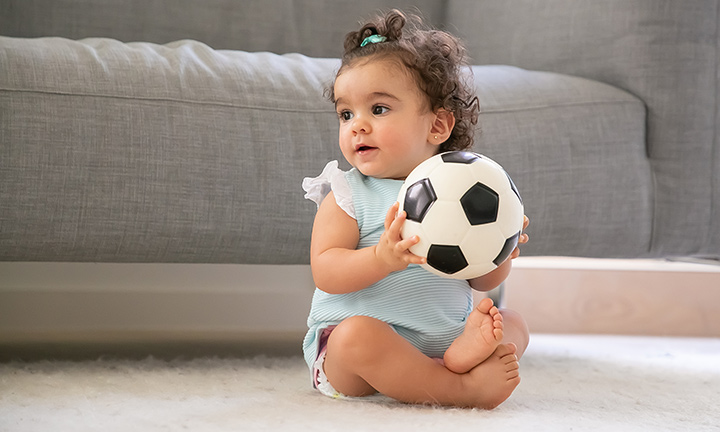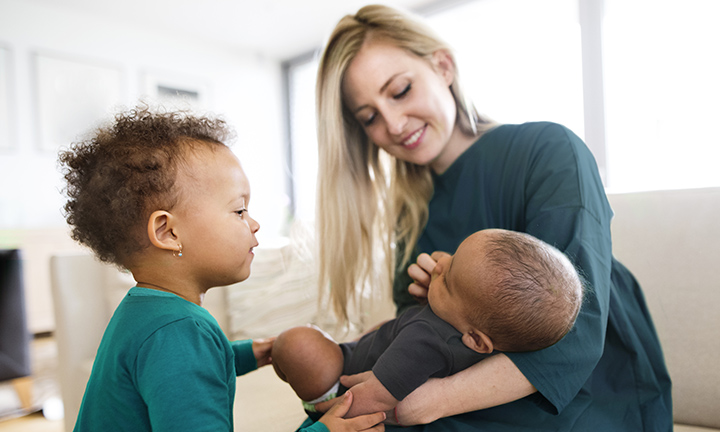
What Is Object Permanence and When Do Babies Understand It?


As your baby grows physically, they’re also gaining knowledge and coming to understand how the world around them works. One of the cognitive skills your baby will develop in their first year is understanding the concept of object permanence.
Learn what exactly object permanence is and how you can help foster your baby’s understanding of it. You may be delighted to know that you’ll be playing lots of peek-a-boos!
What Is Object Permanence?
Object permanence is the concept that objects continue to exist even when they’re not in sight. Early on, babies don’t yet have the cognitive skills to understand that what they can’t see still exists. For young infants, the world around them contains only what they can see in front of them at any given moment.
For example, if you were to leave your baby’s room, they may assume you’ve vanished into thin air. The same goes for concealing objects, such as when you cover a toy with a blanket. They’ll think the toy has disappeared forever.
In time, your baby will begin to understand that you still exist even if they can’t see you, and that a hidden toy is still there under the blanket.
When Does Object Permanence Happen?
Your baby will begin to understand the concept of object permanence when they’re around 7 or 8 months of age.
You can tell that your baby is starting to understand object permanence if they start looking around for a toy you've just hidden.
Separation anxiety usually starts around this time, too. So, if you’re wondering “When do babies realize they’re separate from their mom?” It’s around the time that object permanence starts to develop, which in turn may lead to separation anxiety. This is generally because your baby is just realizing that you exist even when they don’t see you, but they still don’t understand when or if you’ll return, causing them to become upset when you leave. Your baby may "cling" to you and may fuss and cry, especially when you leave their sight or go away. In a way, separation anxiety is related to your baby not fully understanding object permanence.
With separation anxiety, your baby most likely will be in great distress when you leave the room because they don’t know that you’ll come back. Once they understand the concept of object permanence, they’ll know that they can expect your return, and they may even cry less while you’re away.
Stages of Object Permanence
Object permanence—the understanding that objects continue to exist even when not visible—is a key cognitive milestone in infant development. Here’s a general guide to the stages through which infants develop and understand the concept of object permanence:
It's important to note that while these stages provide a general framework, individual differences exist, and some infants may develop object permanence skills earlier or later than outlined.
Signs and Examples of Object Permanence Development
What if Your Baby Doesn't Develop Object Permanence?
Keep in mind that every child develops at their own rate, but if you have concerns about your child’s understanding of object permanence, you can consult your healthcare provider for more advice. You can also use some of our ideas in the section below to help them develop object permanence, as well as look for some of the signs above once your child is 7 or 8 months old.
If your baby isn't showing signs of object permanence—such as searching for hidden objects or reacting to peekaboo games—by around 12 months, consult their healthcare provider who will likely check for developmental delays. Developmental screenings are performed at your child’s regular Well-Child visits.
Many people mistakenly believe that ADHD is linked to a lack of object permanence. In reality, children with ADHD do not struggle with understanding that objects continue to exist even when they are out of sight. Instead, their ADHD may lead to difficulties in focusing and remembering things. They are aware that an object still exists, but they may forget about them if they don’t receive a reminder.
How to Help Your Baby Develop Object Permanence?
Object permanence is a natural part of your baby’s cognitive development, and your little one will come to learn that objects continue to exist even when they can’t see them.
You can help foster this aspect of cognitive development through play and learn activities like peek-a-boo and hide-and-seek, or by hiding and revealing objects.
When your baby starts to understand object permanence—around 7 or 8 months old—try this simple game:
Hide a favorite toy underneath a blanket, and when they’re looking away, remove it. Your baby may be puzzled as to where the toy went. Keep doing this game and eventually—closer to 10 months old—they’ll search for the missing toy, knowing it exists even though it’s not clearly visible. At this point, they’ll have a fuller understanding of this concept.
As your baby observes all the things that happen in the household, such as the comings and goings of siblings, parents, and pets, the concept of object permanence will become reinforced.
Check out our dedicated article for more fun games to play with your baby.
FAQS AT A GLANCE
After developing object permanence, typically around 8 to 12 months, infants begin to engage in more complex cognitive activities. They start to imitate observed behaviors, experiment with cause-and-effect relationships, and develop problem-solving skills. This period also marks the emergence of separation anxiety, as babies recognize that caregivers continue to exist even when out of sight.
The Bottom Line
Seeing your baby grow and develop is a wonderful thing. There’s so much for your little one to learn about in the world. It’s incredible to watch your baby’s horizons expanding at breakneck speed.
The concept of object permanence is just one of the important things your baby is learning during this time, and it’s something you can help along.
Try playing hide-and-seek with a favorite toy or peek-a-boo to help encourage your baby’s development. In time, your baby will learn that the toy hasn’t disappeared for good, and that mommy and daddy will always return.
- American Academy of Pediatrics. Caring for Your Baby and Young Child: Birth to Age 5, 7th ed. (New York: Bantam Books, 2019).
- AAP Publications: Separation Anxiety Disorder: Planning Treatment
- Cleveland Clinic: Developmental Delay in Children
- Healthy Children: Cognitive Development in Infants: 4 to 7 Months
- Healthy Children: Cognitive Development in Infants: 8 to 12 Months
- Healthy Children: Early Signs of ADHD in Children
- Kids Health: Learning, Play, and Your 4- to 7-Month-Old
- Kids Health: Learning, Play, and Your 8- to 12-Month-Old
- Kids Health: Separation Anxiety
- Mayo Clinic: Infant development: Milestones from 10 to 12 months
- Zero to Three: Developing Thinking Skills from 12-24 Months
- Osborne JB, Zhang H, Carlson M, Shah P, Jonides J. The association between different sources of distraction and symptoms of attention deficit hyperactivity disorder. Front Psychiatry. 2023;14:1173989. doi:10.3389/fpsyt.2023.1173989
Read more about Baby
Related Articles
Join a World of Support
through Pregnancy and Parenthood.
TRACK WITH TOOLS
LEARN WITH EXPERTS
GET REWARDED














